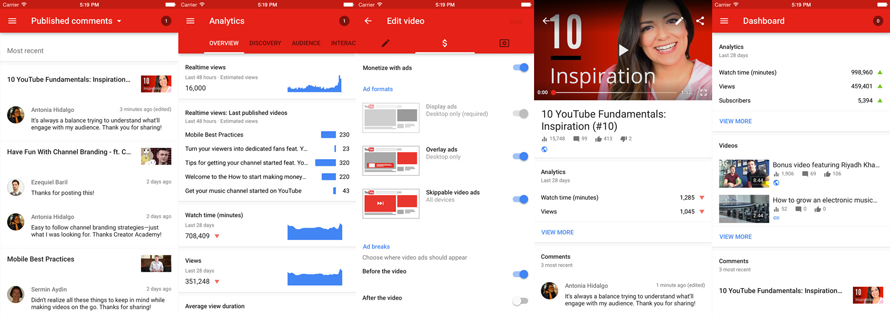September 21, 2016
Back in 2006, the quickest way to grow your audience on YouTube was to have your video make it on the home page of the site. In those early days of YouTube, an actual human was curating the content that made it on to the home page (crazy, right?). In fact, most of the biggest old-school YouTube influencers such as Shane Dawson, Smosh, ShayCarl and Philip DeFranco got their first push into social media stardom as a result of this curation.
Fast-forward 10 years, YouTube is the second largest search engine on the internet. Second only to its owner (that’s Google, in case you’re not familiar). With the acquisition came Google Analytics, and creators became familiar with the ominous YouTube algorithms. YouTube’s algorithms are designed to make sure good quality content is shared more often than those videos you watch and wish you could have those 4 minutes back. So in other words, make good content and more people will see it, sounds great, right? Except that no one actually knows how it all really works. There are a few tricks of the trade that are passed around the community: make longer videos, have detailed descriptions and post the same time every week. Even uploading in 4k and adding closed captions has been rumoured to have a positive effect on the popularity of your content.
The trouble is, short of being a YouTube engineer (or just a general maths nerd), algorithms and analytics can seem alien to a lot of creators. Creators are known to be a jack of all trades, they come up with ideas, film them, edit them, and promote them. The next logical step for creators is to be able to tailor the content in order to give it the best possible chance of being seen by the YouTube audience. That’s very likely the reason why YouTube has introduced actionable insights in their Creator Studio app. The update brings new features to help creators track and break down analytics in the form of data cards.
“Not a numbers whizz? No worries! We did all the heavy lifting, so you don’t have to.”
The data cards inform the creator of any notable changes in their analytics.
“Did one of your videos experience a sudden spike in views while you were out? With our new insights, you’ll receive a personalised message when a significant event happens on your channel and tips on how to make the most of what’s happening on your channel.”
YouTube as a business is aware that the more it empowers creators to understand what the analytics mean and how to capitalise off of them, the easier it will be for the right audience to find content they love and return to the site. Breaking down analytics in a way that all creators can understand is the first step to make this possible.
